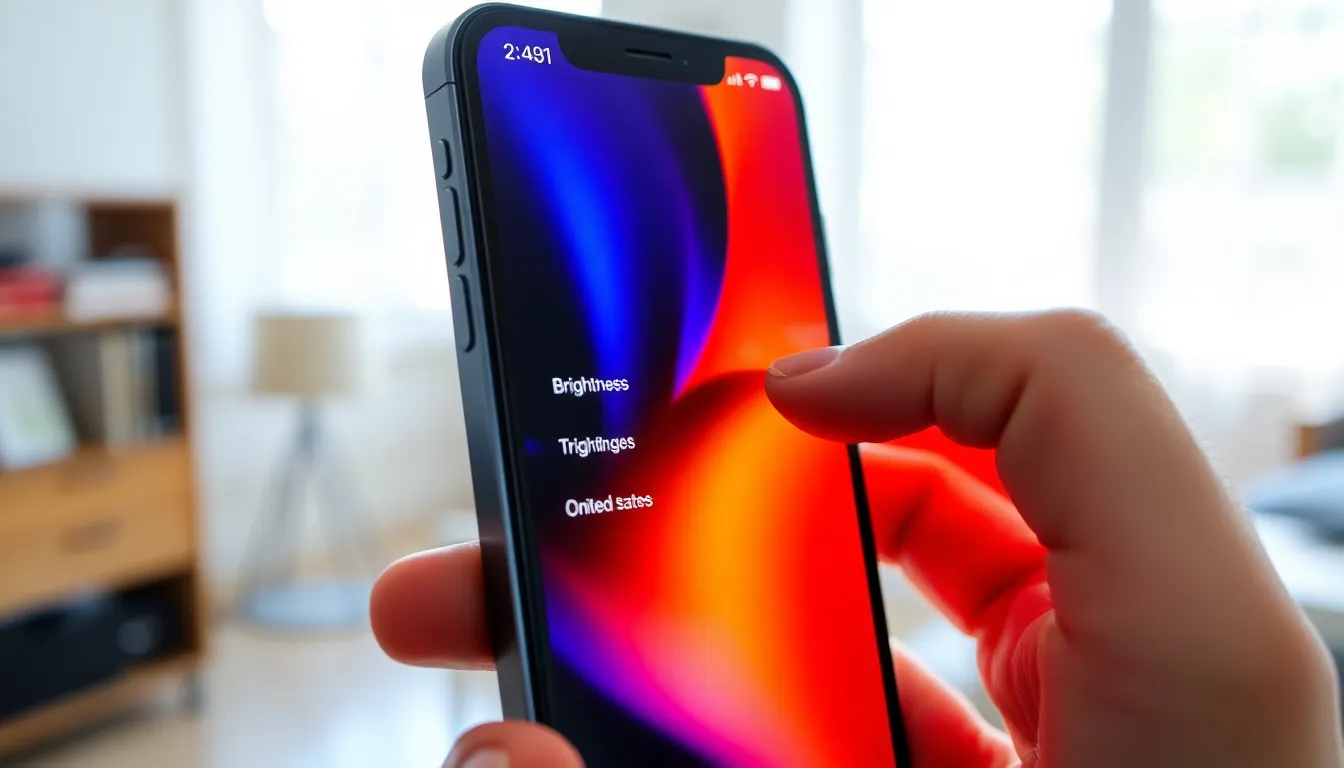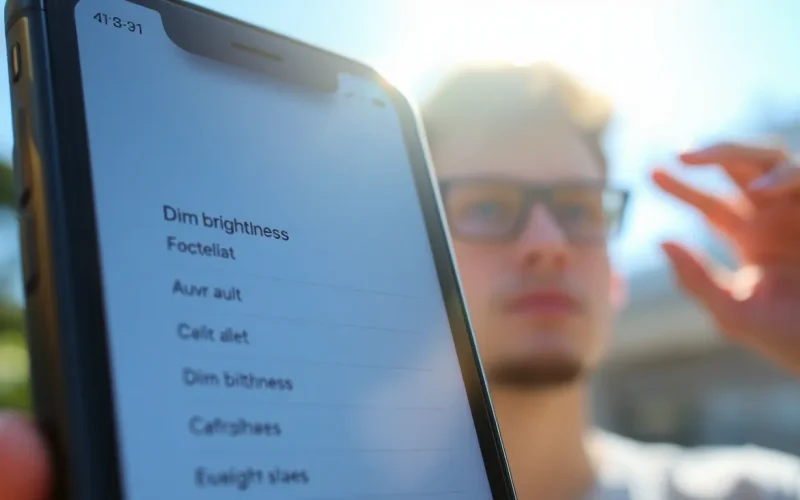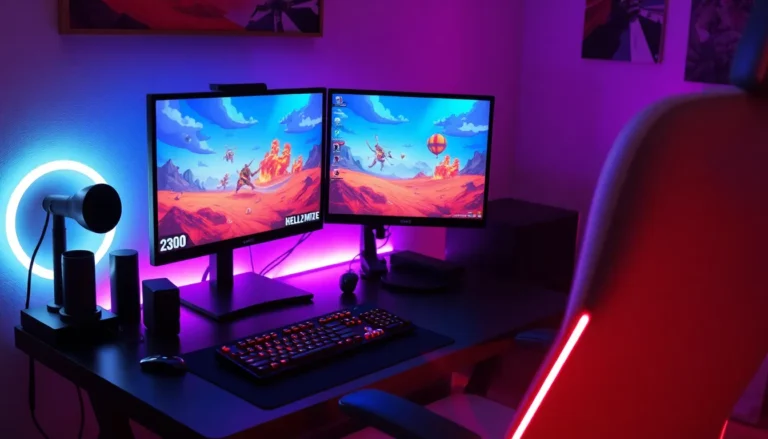Table of Contents
ToggleEver found yourself squinting at your iPhone screen like you’re trying to decipher ancient hieroglyphics? You’re not alone. Many users face the mystery of low brightness, wondering if their device is playing a prank on them. Whether it’s the glaring sun outside or the dimly lit room, a lackluster screen can turn even the simplest tasks into a challenge.
Common Causes of Low Brightness
Low brightness issues on an iPhone may stem from various factors. Understanding these causes can help users troubleshoot effectively.
Hardware Issues
Defective hardware components often contribute to low brightness. A damaged display can result in inadequate brightness, while low battery levels may restrict output. Users frequently encounter this issue after drops or exposure to moisture, damaging internal parts. Testing the display under different conditions can reveal whether hardware malfunctions exist. Replacing screen components or addressing weak batteries might resolve brightness problems.
Software Settings
Incorrect software settings can also lead to low brightness. Features like Auto-Brightness automatically adjust screen brightness based on ambient light. Users sometimes disable this feature, leading to lower brightness levels in undesirable situations. Additionally, turning on Low Power Mode diminishes screen brightness to save battery life. Checking display settings and disabling power-saving options often helps restore appropriate brightness levels. Adjusting these settings brings immediate results for many users.
Troubleshooting Steps

These steps help anyone resolve low brightness issues on an iPhone effectively. Users can enhance their device’s visibility in various lighting conditions through simple adjustments.
Adjusting Brightness Settings
To adjust brightness settings, navigate to Settings. Users can then select Display & Brightness. Manual brightness adjustment allows fine-tuning to meet specific preferences. Moving the slider alters the screen brightness immediately. In bright environments, increasing the brightness can enhance visibility significantly.
Disabling Auto-Brightness
Disabling Auto-Brightness can address unexpected dimming. Open Settings and select Accessibility. From there, tap Display & Text Size and toggle off Auto-Brightness. This feature automatically adjusts brightness based on ambient light. Turning it off grants users complete control over their device’s brightness, preventing unintentional changes.
Restarting the Device
Restarting the device often resolves many glitches including low brightness issues. To restart an iPhone, press and hold the side button and either volume button until the slider appears. Users must then drag the slider to power off. Once off, pressing the side button again turns the device back on. A fresh start frequently resolves temporary software issues impacting brightness.
Advanced Solutions
For users still struggling with low brightness on their iPhones, advanced solutions offer additional ways to resolve the issue effectively.
Updating iOS
Updating iOS can resolve performance issues and bugs affecting brightness. To check for updates, users can navigate to Settings, tap General, then select Software Update. Downloading the latest version ensures the device benefits from optimizations and fixes that enhance functionality. Regular updates keep system software running smoothly and may directly improve brightness control.
Resetting All Settings
Resetting all settings often restores configuration without erasing personal data. Users can perform this by going to Settings, then General, and scrolling down to Transfer or Reset iPhone. Once there, selecting Reset and choosing Reset All Settings resets system preferences, including display settings. After completing this action, users must reconfigure customized settings, but it can eliminate persistent brightness problems.
When to Seek Professional Help
Users should seek professional help when brightness issues persist despite trying all available troubleshooting steps. Screen brightness that fluctuates erratically or remains consistently low signals a potential hardware problem. This may indicate defective components that require repair or replacement by a technician.
Issues stemming from water damage can also present difficulty diagnosing and repairing at home. Professional assessment may uncover hidden damage that users cannot identify independently. When experiencing frequent software glitches affecting brightness after updates, consulting an expert may resolve underlying problems.
Users might notice that repeated attempts to reset settings do not achieve desired results. In such cases, professionals can provide a more thorough evaluation of underlying causes. Checking warranty status becomes essential, as repairs often fall under coverage, reducing potential costs for users.
Bringing an iPhone to an Apple store or authorized service provider presents an opportunity for a comprehensive diagnosis. Technicians utilize specialized tools and expertise to address brightness concerns efficiently. Users can schedule an appointment or walk in for immediate assistance based on availability.
Seeking professional help ensures users receive accurate solutions tailored to their devices. Ultimately, trusting skilled technicians can provide peace of mind, knowing qualified professionals handle complex issues.
Low brightness on an iPhone can be frustrating but understanding the causes and solutions can make a difference. By adjusting settings and exploring troubleshooting steps users can regain control over their device’s brightness. Regular software updates and simple resets often resolve temporary issues.
If problems persist seeking professional help is advisable. Technicians can diagnose hardware issues that might be affecting brightness levels. With the right approach users can enjoy a clearer display and a more satisfying experience with their iPhone.





